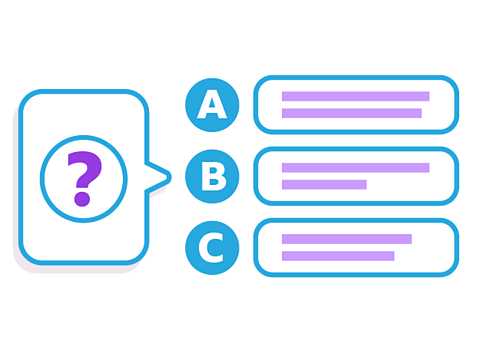Key points about the preterite tense with regular verbs in Spanish

Use the preterite tense to talk about what has already happened or actions that have been completed.
The preterite tense is often used with specific time frames, eg yesterday, last week, last year.
Most Spanish verbs are regular in the preterite tense.
Video - Regular verbs in the preterite tense
Watch the video to understand how to form the preterite tense of regular verbs in Spanish.
The preterite tense is used to talk about completed actions in the past
Did you win the World Cup? Or maybe you just stayed in on your phone? If you want to talk about a completed action in the past, you need to use the preterite tense. You form the preterite by removing the ar, er or ir ending from an infinitive and adding a preterite ending.
There are only two sets of endings for regular preterite verbs, one for ar verbs and one for both er and ir verbs.
Hablar, to speak, is an ar verb and becomes ³ó²¹²ś±ōĆ©, hablaste, ³ó²¹²ś±ōĆ³, hablamos, hablasteis, hablaron.
Worked at the aquarium last night? 'To work' is trabajar.
So in the preterite it would be trabajĆ© en el acuario. Letās move on to er and ir verbs.
Luckily these both use the same set of endings.Take beber, to drink. In the preterite, beber becomes ²ś±š²śĆ, bebiste, ²ś±š²ś¾±Ć³, bebimos, bebisteis, bebieron.
I ate at my grandmaās house.āTo eatā, āc“Ē³¾±š°łā becomes ā³¦“Ē³¾Ć en casa de mi abuelaā.
When to use the preterite tense in Spanish
The Spanish preterite tense is used to describe completed actions in the past.
For example:
Fui al cine ayer. - I went to the cinema yesterday.
Viajamos en tren. - We travelled by train.
Mi hermana hizo sus deberes. - My sister did her homework.
The preterite tense is used if the past action had a definite beginning and definite end and is often used with phrases that give a specific time frame.
For example:
Sorry, something went wrongCheck your connection, refresh the page and try again. - yesterday
Sorry, something went wrongCheck your connection, refresh the page and try again. - the day before yesterday
Sorry, something went wrongCheck your connection, refresh the page and try again. - last night
Sorry, something went wrongCheck your connection, refresh the page and try again. - last year
Sorry, something went wrongCheck your connection, refresh the page and try again. - last month
Sorry, something went wrongCheck your connection, refresh the page and try again. - last week
The preterite tense is not used to:
describe people in the past
describe or set a scene
describe repeated or continuous actions in the past with no specific beginning or end
How to form the preterite tense in Spanish with regular verbs
Most verbs are regular in the preterite tense. This means that they follow a pattern.
For regular verbs, the preterite is formed by removing the ar /er / ir from the infinitiveForm of the verb that has not been conjugated. Usually translated with 'to' in English, eg to play. to form the stemThe part of the verb that is left once the infinitive ending (ar/er/ir) has been taken off. It can also be called a radical. and adding the following preterite endings:
| ar verb | er verb | ir verb |
|---|---|---|
| Sorry, something went wrongCheck your connection, refresh the page and try again. (to speak) | Sorry, something went wrongCheck your connection, refresh the page and try again. (to eat) | Sorry, something went wrongCheck your connection, refresh the page and try again. (to write) |
| Sorry, something went wrongCheck your connection, refresh the page and try again. (I spoke) | Sorry, something went wrongCheck your connection, refresh the page and try again. (I ate) | Sorry, something went wrongCheck your connection, refresh the page and try again. (I wrote) |
| Sorry, something went wrongCheck your connection, refresh the page and try again. (you singular spoke) | Sorry, something went wrongCheck your connection, refresh the page and try again. (you singular ate) | Sorry, something went wrongCheck your connection, refresh the page and try again. (you singular wrote) |
| Sorry, something went wrongCheck your connection, refresh the page and try again. (he/she spoke) | Sorry, something went wrongCheck your connection, refresh the page and try again. (he/she ate) | Sorry, something went wrongCheck your connection, refresh the page and try again. (he/she wrote) |
| Sorry, something went wrongCheck your connection, refresh the page and try again. (we spoke) | Sorry, something went wrongCheck your connection, refresh the page and try again. (we ate) | Sorry, something went wrongCheck your connection, refresh the page and try again. (we wrote) |
| Sorry, something went wrongCheck your connection, refresh the page and try again. (you plural spoke) | Sorry, something went wrongCheck your connection, refresh the page and try again. (you plural ate) | Sorry, something went wrongCheck your connection, refresh the page and try again. (you plural wrote) |
| Sorry, something went wrongCheck your connection, refresh the page and try again. (they spoke) | Sorry, something went wrongCheck your connection, refresh the page and try again. (they ate) | Sorry, something went wrongCheck your connection, refresh the page and try again. (they wrote) |
Spelling changes in the āIā form
Some verbs in the preterite tense have a spelling change in the yo (I) form only.
Here are some examples:
| Spanish infinitive | English | 'I' form in the preterite tense | English |
|---|---|---|---|
| Sorry, something went wrongCheck your connection, refresh the page and try again. | to play | Āį³Ü²µ³ÜĆ© | I played |
| Sorry, something went wrongCheck your connection, refresh the page and try again. | to arrive | ±ō±ō±š²µ³ÜĆ© | I arrived |
| Sorry, something went wrongCheck your connection, refresh the page and try again. | to look for | ²ś³Ü²õ±ē³ÜĆ© | I looked for |
| Sorry, something went wrongCheck your connection, refresh the page and try again. | to pay | ±č²¹²µ³ÜĆ© | I paid |
| Sorry, something went wrongCheck your connection, refresh the page and try again. | to start | ±š³¾±č±š³¦Ć© | I started |
| Sorry, something went wrongCheck your connection, refresh the page and try again. | to start | ³¦“Ē³¾±š²Ō³¦Ć© | I started |
| Sorry, something went wrongCheck your connection, refresh the page and try again. | to practise | ±č°ł²¹³¦³Ł¾±±ē³ÜĆ© | I practised |
| Sorry, something went wrongCheck your connection, refresh the page and try again. | to touch/play an instrument | ³Ł“Ē±ē³ÜĆ© | I touched/played |
| Sorry, something went wrongCheck your connection, refresh the page and try again. | to organise | “Ē°ł²µ²¹²Ō¾±³¦Ć© | I organised |
For example:
JuguƩ con mis amigos en el parque. - I played with my friends in the park.
LleguƩ a la casa a las seis. - I arrived home at six.
EmpecƩ a leer un nuevo libro. - I started to read a new book.
Preterite tense with regular verbs in Spanish - Mini quiz

Translate the following into Spanish using the verb terminar:
I finished.
³Ł±š°ł³¾¾±²ŌĆ©
Translate the following into Spanish using the verb beber:
We drank.
bebimos
Quiz - Preterite tense regular verbs
Practise what you've learned about the preterite tense with regular verbs in Spanish with this quiz.
Video - Preterite tense
Watch the video to learn more about forming the preterite tense in Spanish.
Use the preterite tense to talk about what we did in the past, for example yesterday, last week or last year
The preterite tense: How to talk about the past in Spanish.
Sometimes we want to talk about things that have already happened and for that you need the preterite, which is a past tense.
For verbs ending in ar, like hablar (to speak) you usually take away the ar and add one of the following endings:
³ó²¹²ś±ōĆ© - I spoke
hablaste - you spoke
³ó²¹²ś±ōĆ³ - he/she spoke
HablƩ con mi amigo por telƩfono - I spoke to my friend on the phone.
Another example of this pattern is visitar (to visit).
ĀæVisitaste Madrid con tu familia? - Did you visit Madrid with your family?
VisitĆ³ la catedral - he/she visited the cathedral.
What about verbs ending in er and ir?
The good news is they share the same pattern.
Letās take the verb salir (to go out).
I went out with my friends - SalĆ con mis amigas.
Did you go out to the cinema? - ĀæSaliste al cine?
He/She went out for dinner - SaliĆ³ a cenar
Now you have learned about the preterite tense with regular verbs in Spanish why not explore regular verbs in the perfect tense in Spanish?
More on Past tense verbs
Find out more by working through a topic
- count3 of 5
